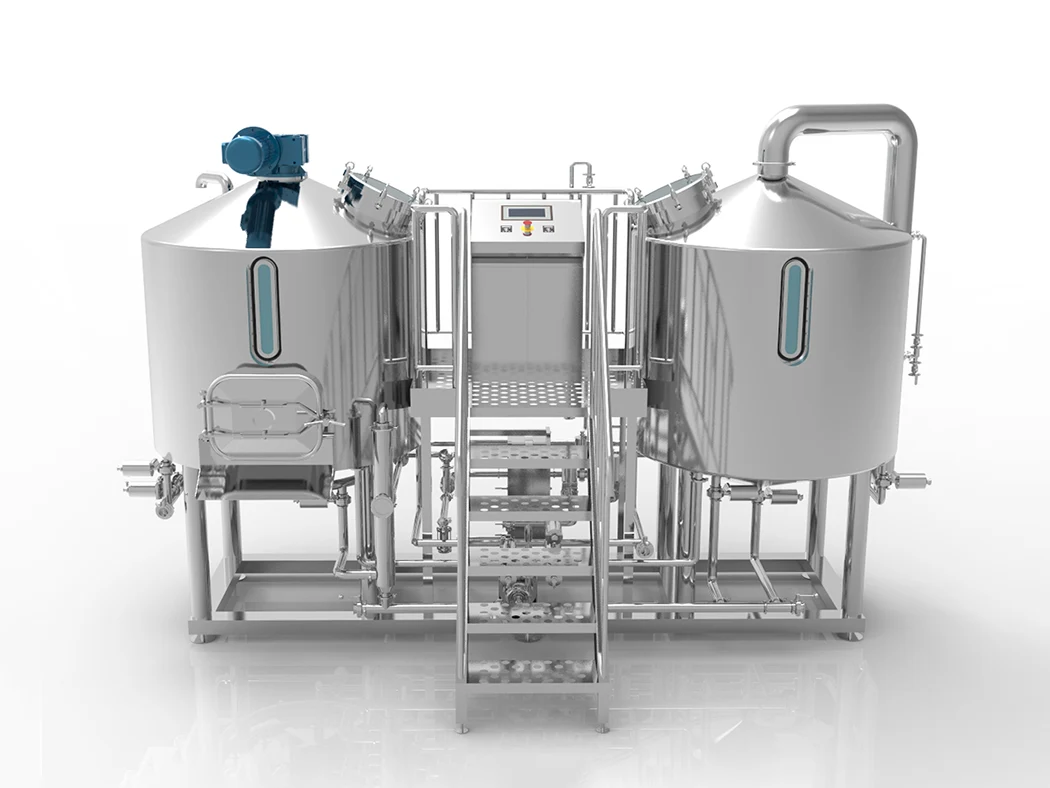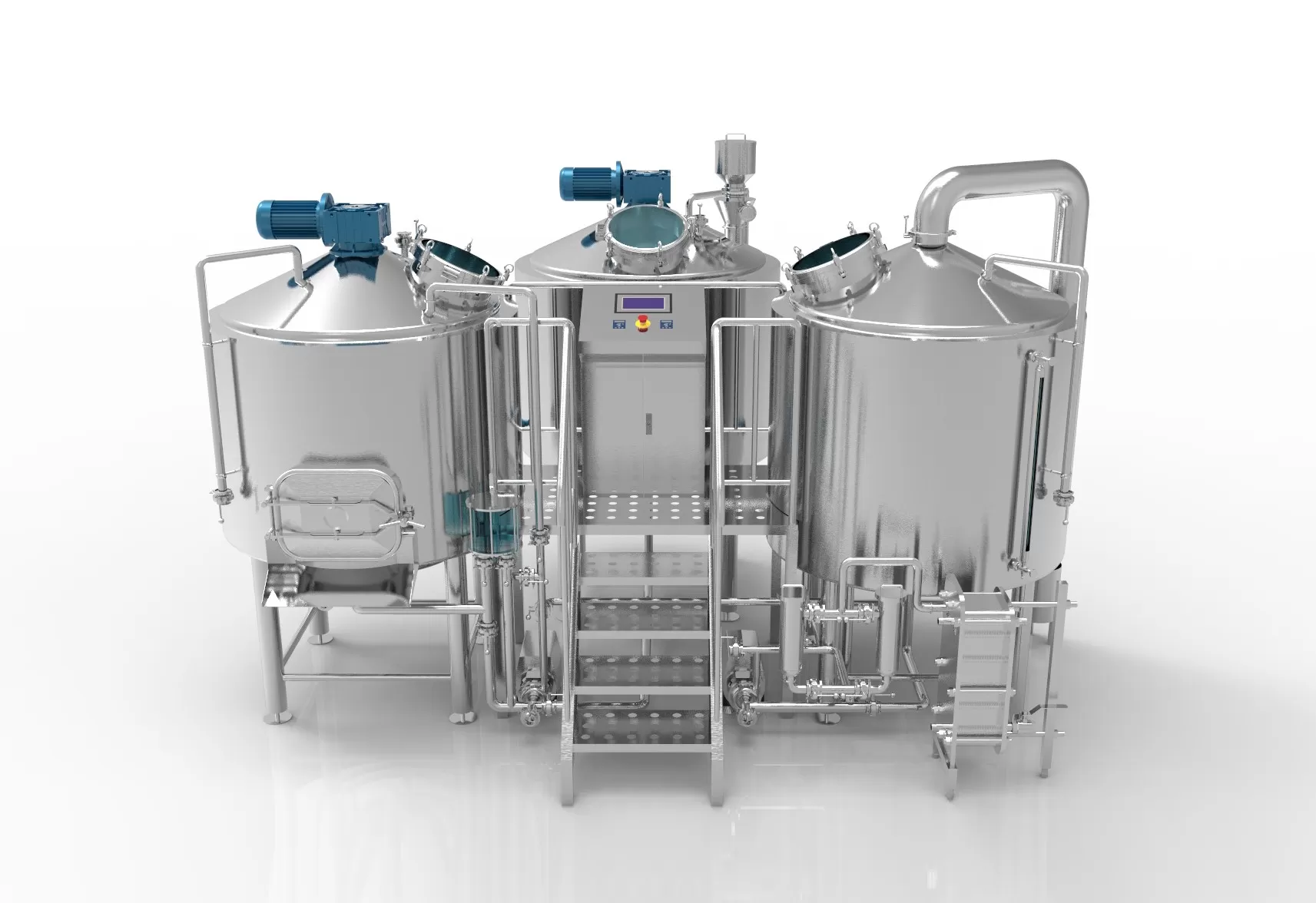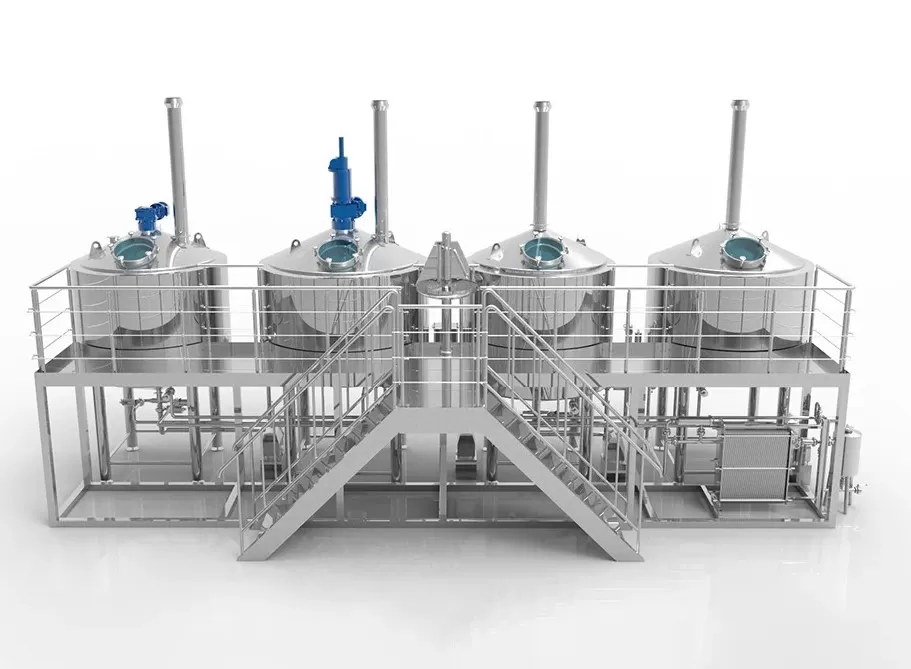Struggling to find the right brewery tanks for your operation?
Brewers everywhere face the frustration of unreliable tanks, lost batches, and inconsistent results. It doesn’t have to be this way—advanced, high-quality brewery tanks deliver consistent control, superior quality, and peace of mind.
What are brewery tanks and why are they essential to brewing?
Brewery tanks are purpose-built vessels—like fermenters, brite tanks, and mash tuns—used at every stage of beer and beverage production. The right tanks optimize brewing, guarantee safety, and ensure every batch meets exacting standards for craft and commercial breweries.
1. What Are Brewery Tanks? (Definition & Types)
Brewery tanks are the workhorses of any brewery, playing a critical role in every phase of beer and beverage production. A brewery’s tank lineup typically includes mash tuns, fermentation tanks (fermenters), brite tanks, storage tanks, and serving tanks. Each tank is engineered for a specific stage in the brewing process, from mashing and fermentation to conditioning and storage.
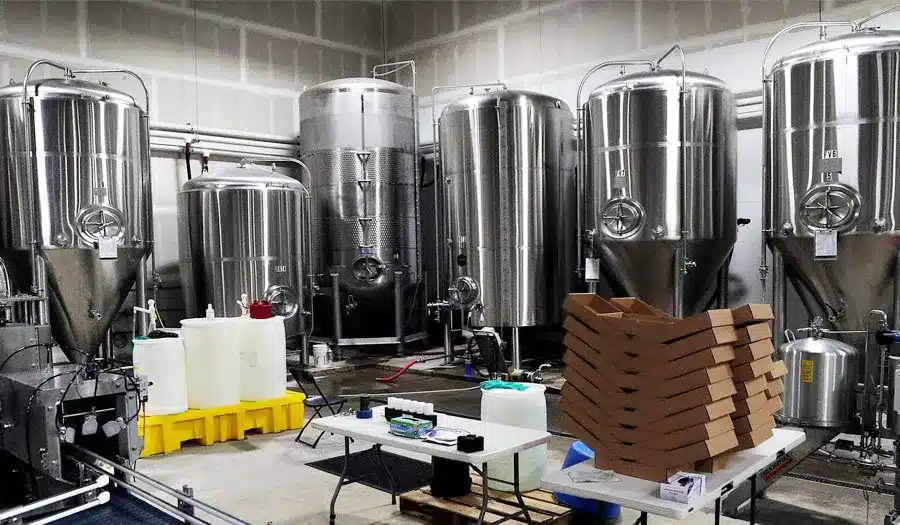
Main Types of Brewery Tanks:
| 탱크 유형 | 기능 | Common Size (Barrel) | 재질 |
|---|---|---|---|
| 매시 툰 | Steeps malt with water, starts sugar extraction | 3-30 BBL | 스테인리스 스틸 |
| 발효기 | Primary vessel for yeast fermentation | 3-120 BBL | 스테인리스 스틸 |
| 브라이트 탱크 | Carbonation and storage of finished beer | 3-120 BBL | 스테인리스 스틸 |
| Serving Tank | Holds beer ready for serving or packaging | 3-120 BBL | 스테인리스 스틸 |
| 저장 탱크 | Temporary storage for beer, wort, or water | 변수 | Steel, Poly |
Modern brewery tanks are designed with precision control, high-grade stainless steel, and advanced features to improve yield, safety, and product consistency. Whether for craft breweries, distilleries, or kombucha fermenters, a solid tank system is the heart of every brewing operation.
Explore more about specialized microbrewery brewing equipment.
2. How Do Brewery Tanks Work in the Brewing Process?
Brewing is a step-by-step journey where each tank type serves a specific role in the process:
- 매시 툰: Where malted grain is soaked with hot water, converting starches into fermentable sugars.
- Kettle: The sweet liquid (wort) is boiled with hops for flavor and sterilization.
- 발효기: Yeast is added, turning sugars into alcohol and CO2. Fermenters come in various sizes and shapes—conical fermenters, unitanks, horizontal fermenters—tailored for different brewery setups.
- Brite Tank: Beer is clarified, carbonated, and stored prior to packaging. Brite tanks include advanced controls for temperature, CO2 pressure, and sanitation.
- Serving/Storage Tanks: Finished beer is kept at ideal conditions for packaging or direct service.
Key Steps in the Brewing System:
- 매싱 → 2. 끓이기 → 3. 발효 → 4. Conditioning/Brite Tank → 5. Serving or Packaging
A brewery’s production systems hinge on tank performance. The material (stainless steel), design (pressure rated, insulated), and control options (temperature, glycol piping) all directly impact product quality, yield, and efficiency.
Discover complete brewing equipment systems for all batch sizes.
3. Fermenters vs. Brite Tanks: What’s the Difference?
Many brewers ask: Is a fermenter the same as a brite tank? Not quite. While both are critical to brewing, each serves a unique purpose.
- 발효기 (fermentation tanks) are where the yeast works its magic, converting sugars into alcohol and flavor compounds. These tanks are pressure-rated, often conical for easy yeast harvesting, and allow for precise temperature control.
- 브라이트 탱크 act as finishing vessels. After fermentation, beer moves to the brite tank for clarification, carbonation, and storage before packaging. Brite tanks include sight glasses, carbonation stones, and sampling valves for quality checks.
Fermenters and Brite Tanks: Key Differences
| 기능 | 발효기 | 브라이트 탱크 |
|---|---|---|
| 목적 | 발효 | Conditioning, Storage |
| Pressure Rated | 예 | 예 |
| 탄산 | Limited (except unitanks) | Primary function |
| 청소 | CIP(클린인플레이스) | CIP |
| Sampling Valve | Optional | 표준 |
Choosing the right combination of fermenters and brite tanks is vital for smooth brewery operation and consistent craft beer production.
4. Key Features of Modern Brewery Tanks
Today’s brewing tanks are engineered with performance, reliability, and efficiency in mind. Some top features include:
- High-Quality Stainless Steel: Corrosion-resistant, easy to clean, and built for food safety.
- Insulation & Temperature Control: Essential for fermentation and storage tanks, often with integrated glycol piping or jackets.
- Pressure Rating & Safety Valves: Allow safe carbonation and handling of high-pressure beverages.
- CIP (Clean-in-Place) Systems: Automated cleaning for minimal downtime and maximum hygiene.
- Custom Fittings: Sample ports, sight glasses, carbonation stones, and advanced control systems.
- Flexible Sizing: From small nano brewing tanks to massive commercial production systems.
“When you invest in a high-quality brewery tank system, you invest in every batch’s success.”
Internal link: Learn more about 수제 맥주 양조 장비 and how tanks shape brewing results.
5. Choosing the Right Material: Stainless Steel vs. Other Options
When selecting brewery tanks, 스테인리스 스틸 is the industry gold standard. Its popularity stems from excellent corrosion resistance, non-reactivity with beverages, durability, and ease of cleaning. Stainless steel tanks are trusted by craft breweries, kombucha fermenters, and large commercial distilleries worldwide.
Why Choose Stainless Steel Brewery Tanks?
- Corrosion resistance: Essential for both acidic wort and beer.
- Easy sanitation: Smooth, non-porous surface for thorough cleaning.
- Long service life: Withstands years of production and repeated use.
- Aesthetic appeal: Sleek, professional look for breweries open to the public.
Other materials like copper or food-grade plastic (polyethylene) are sometimes used for specialty vessels, but they lack the universal advantages of stainless steel, especially in high-volume, high-quality production systems.
Explore our full selection of stainless steel fermenters, brite tanks, and brewing vessels.

6. Brewery Tank Sizes and Configurations
No two breweries are exactly alike. Tank 크기 and configuration depend on batch volume, available space, beer styles, and expansion plans. Craft breweries often start with smaller tanks, then scale up as demand grows. Commercial production facilities require multiple batches and large capacity tanks.
Typical Brewery Tank Sizes
| 탱크 유형 | 나노 양조장 | 소규모 양조장 | 상업용 양조장 |
|---|---|---|---|
| 매시 툰 | 2-5 BBL | 5-20 BBL | 20-120+ BBL |
| 발효기 | 2-10 BBL | 10-40 BBL | 40-200+ BBL |
| 브라이트 탱크 | 2-10 BBL | 10-40 BBL | 40-200+ BBL |
| Serving Tank | 2-10 BBL | 10-40 BBL | 40-200+ BBL |
- BBL = Barrel (31 US gallons/117 liters)
Pro tip: It’s wise to allow for some extra volume in fermenters to prevent spills during active fermentation. A modular system allows future expansion with additional tanks.
For microbrewery needs, check out our micro beer brewing equipment and solutions tailored to fit your space.
7. Brewery Tank Systems: From Nano to Commercial Production
Brewery tanks are available as standalone vessels or as part of turnkey production systems. Whether you’re launching a nano brewery or scaling a large brewery operation, the right tank system boosts efficiency, output, and beverage consistency.
Types of Tank Systems
- 나노 양조장 시스템 – Compact, highly automated, great for experimental batches or taproom exclusives. 나노 양조장 장비
- Microbrewery Systems – Scalable, offering flexibility to produce a range of craft beer styles.
- Commercial Production Systems – High-capacity, automated controls, and full cellar integration. Perfect for breweries, distilleries, and beverage bottlers.
Turnkey systems can include everything: brewhouse, fermentation tanks, brite tanks, storage tanks, glycol piping, and control automation. This reduces the risk of compatibility issues and streamlines installation and operation.
Learn about nano brewery equipment for sale for startups and expanding breweries.
8. Custom and Turnkey Brewing Equipment Solutions
Every brewer’s vision is unique. That’s why customizable tanks and full turnkey brewing equipment solutions are in high demand. Leading manufacturers offer tanks in any 크기, with options for custom ports, manways, insulation, temperature control, and automated systems.
Popular Customization Options
- Multiple manway styles (top, side, shadowless)
- Adjustable racking arms and sample ports
- CIP spray balls for automated cleaning
- Custom insulation for energy efficiency
- Sight glasses, pressure gauges, and advanced control panels
- Internal or external glycol jackets
Custom brewing tanks help optimize layout, maximize space, and deliver the brewing performance you expect.
Explore more custom brewing equipment and how it supports your brewing goals.
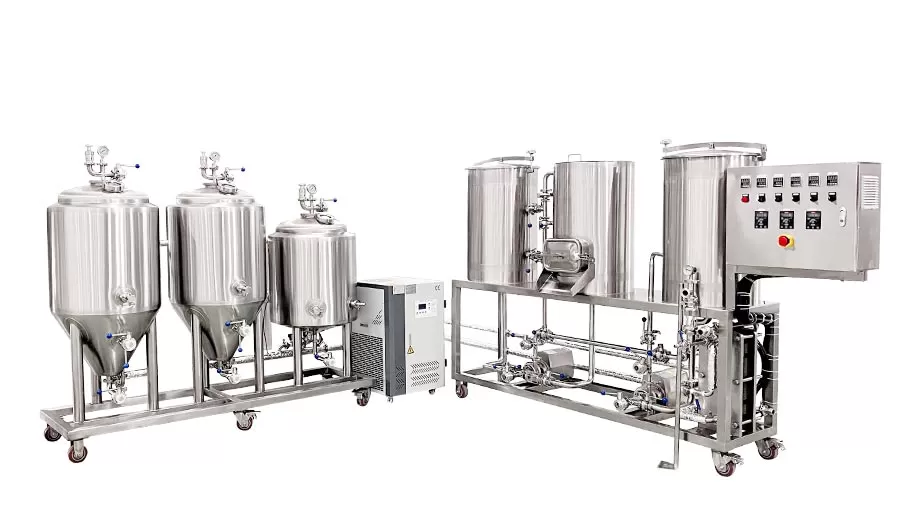
9. Temperature Control and Automation in Brewing Tanks
Consistent temperature control is vital for producing high-quality craft beer, kombucha, and spirits. Modern tanks feature precision temperature regulation, often using glycol piping or integrated steam jackets. Automation systems allow brewers to monitor and adjust fermentation or conditioning in real time.
Automation and Control Features
- Programmable logic controllers (PLCs)
- Automated temperature sensors and alarms
- Glycol or steam piping for heating and cooling
- Real-time monitoring via digital displays or smartphone apps
With the right control system, brewers can reduce manual intervention, minimize risk, and maintain batch-to-batch consistency.
Want a deep dive? Read about micro brewery setup for automated control solutions.
10. Maintenance and Cleaning of Brewery Tanks
Proper maintenance keeps your brewery tanks performing at their best for years. The best practice is a regular cleaning schedule—especially for fermenters and brite tanks—which prevents residue, microbial growth, and flavor carryover.
Cleaning and Maintenance Best Practices
- Use CIP (Clean-in-Place) systems for hands-off, thorough cleaning.
- Regularly inspect gaskets, seals, and valves.
- Monitor for signs of corrosion, especially around welds.
- Flush tanks with cleaning solutions and rinse with hot water between batches.
- Keep detailed logs of tank cleaning and maintenance.
A well-maintained tank system reduces downtime, ensures product safety, and protects your investment.
Frequently Asked Questions About Brewery Tanks
How many tanks does a typical craft brewery need?
A small craft brewery usually starts with one mash tun, two to four fermenters, and one or two brite tanks, but this depends on expected output and beer styles.
What’s the difference between a brite tank and a fermenter?
Fermenters are for yeast fermentation; brite tanks are for conditioning, carbonation, and preparing beer for packaging or serving.
Can I use a fermenter as a serving tank?
Some unitanks (universal tanks) are designed for both fermentation and serving, but dedicated serving tanks often have additional fittings for easy dispensing and cleaning.
How important is tank insulation?
Extremely important! Proper insulation ensures temperature stability during fermentation and storage, saving energy and improving beer quality.
Is stainless steel always better than copper or plastic?
Stainless steel is the industry standard due to hygiene, durability, and ease of cleaning. Copper is mostly for specialty or historical equipment; plastic is for very small-scale or temporary setups.
Do brewery tanks work for beverages other than beer?
Yes! Tanks are used for cider, kombucha, wine, and even distilling spirits, with slight modifications for each beverage type.
Key Takeaways: Brewery Tanks
- Brewery tanks—including mash tuns, fermenters, brite tanks, and storage tanks—are the backbone of every brewing operation.
- 스테인리스 스틸 is the gold standard for durability, hygiene, and ease of use.
- Tank size, configuration, and control options should match your production goals and available space.
- Automated systems and proper cleaning keep tanks working efficiently, batch after batch.
- Custom and turnkey brewing systems are available for any scale, from nano breweries to commercial operations.
Want to Learn More?
- Dive into the 수제 맥주 장비 for start-ups and small batch brewing.
- See advanced fermenters and brite tanks for quality-focused breweries.
- Discover kombucha brewing vessels for healthy beverage production.
- Review the best options in 마이크로 양조장 장비 for scaling up your operation.
- Explore 와인 제조 장비 and how tanks are used beyond beer.
Ready to upgrade your brewery tanks and boost your production quality?
Contact us today for expert guidance, custom solutions, and world-class brewing equipment built to your needs!
This article is informed by years of hands-on experience in brewing equipment manufacturing, working directly with breweries, distilleries, and beverage producers worldwide. For more, visit our blog and product pages.

